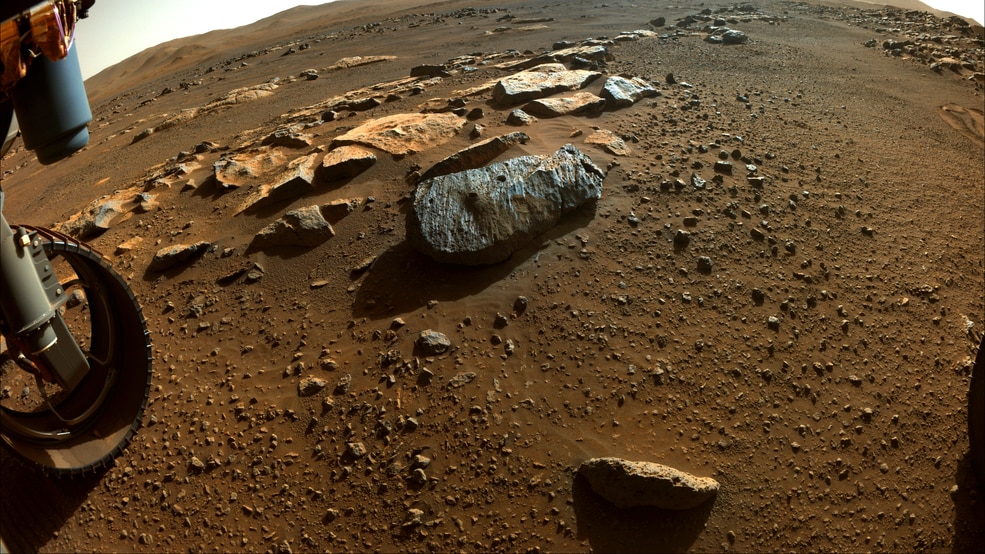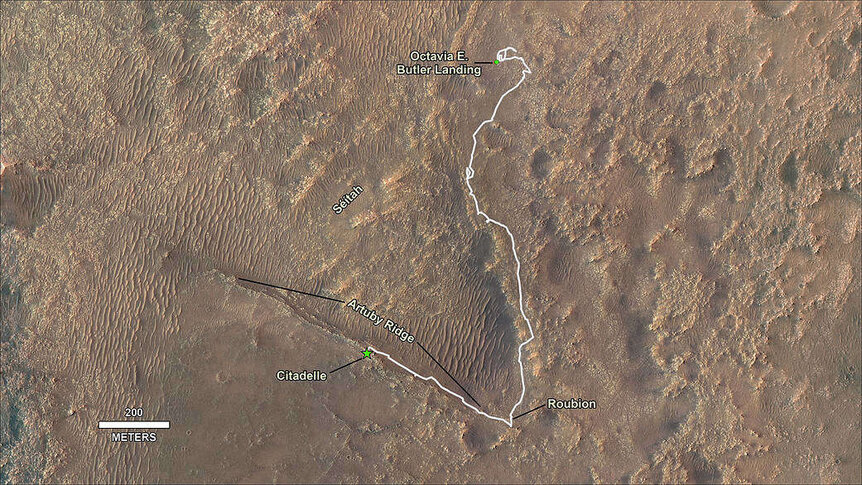Create a free profile to get unlimited access to exclusive videos, sweepstakes, and more!
Perseverance’s first rock samples are a time machine to billions of years ago

Not only has Perseverance persevered and been able to take out not just one, but two Martian rock cores (after the first one fell apart), now it’s getting a read on the planet’s past.
What the rocks (now known as Mondenier and Montagnac) taken from the rock “Rochette” reveal is a greater case than ever for Mars having once been a lush and possibly life-sustaining planet. Whether or not it was actually like Earth with all its different organisms is debatable, but if you’re going off life as we know it, the evidence of water having been in these volcanic rocks means that Jezero Crater was probably flooded before Mars lost its atmosphere.
“It seems most likely that the salts (including sulfates and other salts we are working to identify) indicate the drying down of groundwater,” project scientist Ken Farley of Caltech—which manages NASA’s Jet Propulsion Lab (JPL), the arm of NASA that runs the Perseverance mission —told SYFY WIRE.
Jezero Crater, which Perseverance is scouring for signs of ancient life, was already thought to have been a lake. Whether the lake was there a while has been uncertain until now. Something about the rocks which will be especially valuable in helping figure out how long the crater lake lasted is that they are volcanic rocks, more specifically a type of basalt that formed as bubbling hot lava cooled. Embedded in the basalts are crystalline minerals, such as silica (silicon dioxide), which occurs as quartz crystals, and often olivine and augite, which are both silicates.
The reason scientists on Earth can’t wait to study the Martian crystals is because of the assist they will give to radiometric dating. These minerals could tell us about the entire lifespan of the Jezero Crater lake, from when it first formed to when it finally vanished. Radiometric dating relies on the time it takes for the radioactive decay of certain elements, and analyzing the amount of decay is like pressing the rewind button on Jezero Crater for a few eons. Enough samples like this could tell us the entire timeline of of the crater going back billions of years.
"Groundwater on Earth is inhabited by microbes, and we are assessing whether the same could have been true of the water that was once in these rocks," said Farley.
Another aspect of these rock cores that could mean what is now a barren crater existed as an actual lake is the changes they have gone through. There are salts in these rocks that probably formed when groundwater evaporated and left the salts behind (most likely) or groundwater interacted with them and changed the composition of minerals within the rock (less likely). Even more amazing is that there might be micro-bubbles of Martian water still trapped in these salts. Because salts preserve signs of life so well on Earth, they might also have done so on Mars.
It is unlikely the lake that is now Jezero Crater was just the result of a flash flood that dried up in a few decades. So much alteration from groundwater wouldn’t have happened to the rocks if it had been. While that can’t be confirmed until the Sample Return Mission finally brings these and other samples back to Earth so scientists can see them up close in a lab, Perseverance project scientists think whatever evidence they are finding right now is making it more and more probable that there was at least one sprawling lake on the Red Planet.
So where to next? Perseverance is now crawling towards the sand-blasted ridges of South Séítah, which sort of looks like it could have come out of Dune, except with more sharp edges and no spice. This dusty expanse is also much older than the Mondenier and Montagnac samples, which are examples of some of the youngest rocks on Mars. South Séítah is only a little over 650 feet away. There is just one thing holding the rover back temporarily.
"From orbital data supplemented by what the rover sees, the Seitah area is chemically very different from the rocks we’ve been driving on since landing," Farley said. "Whether it tells us about the lake, or some other ancient environment, is to be determined."
Perseverance will have to pause for the Mars Solar Conjunction during the first week of October, since the sun’s corona is going to belch superhot, ionized gas towards Mars — as if it hasn't been bombarded with enough radiation — which can interfere with communications. After that, it should continue to carry on.



























